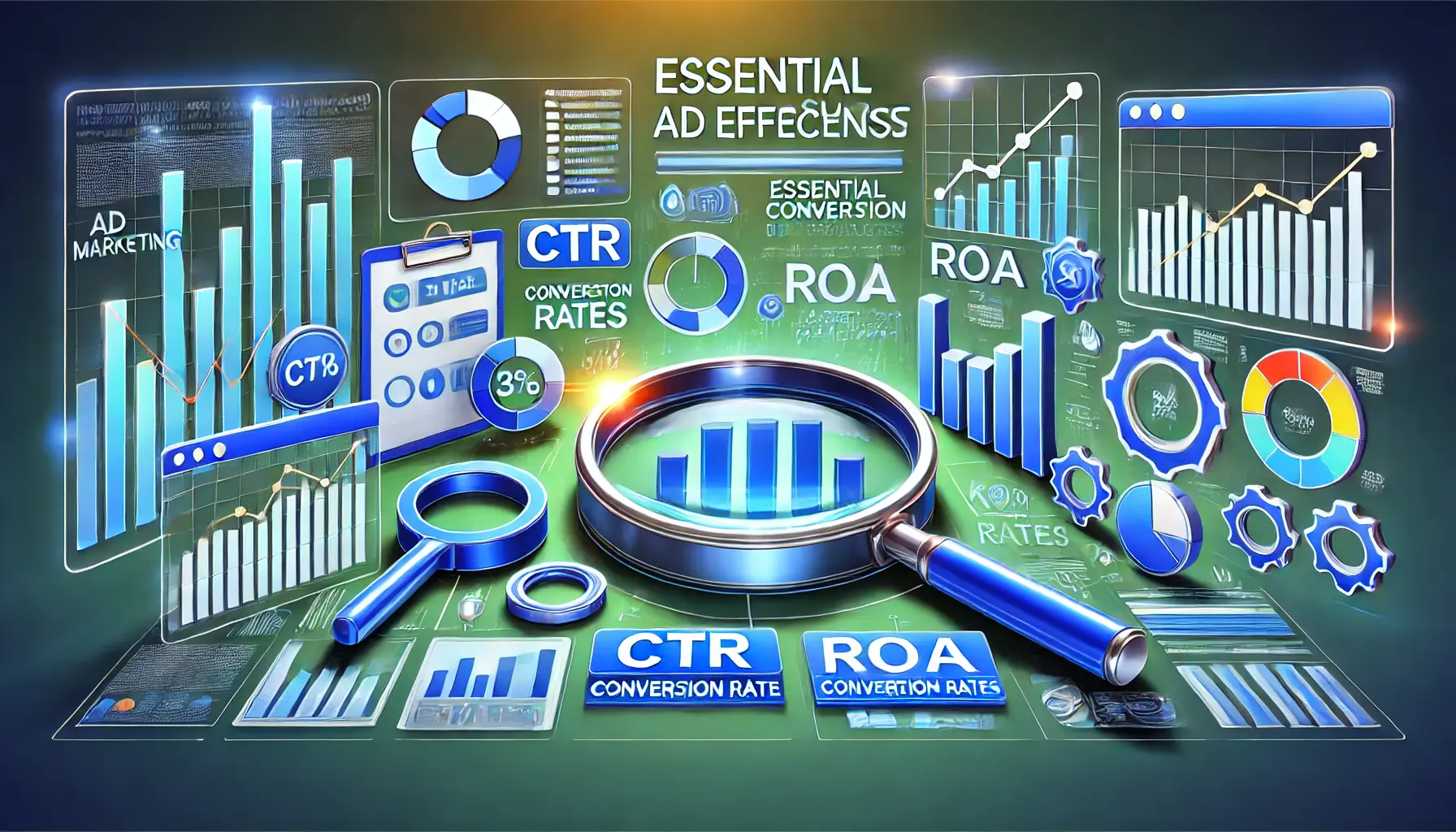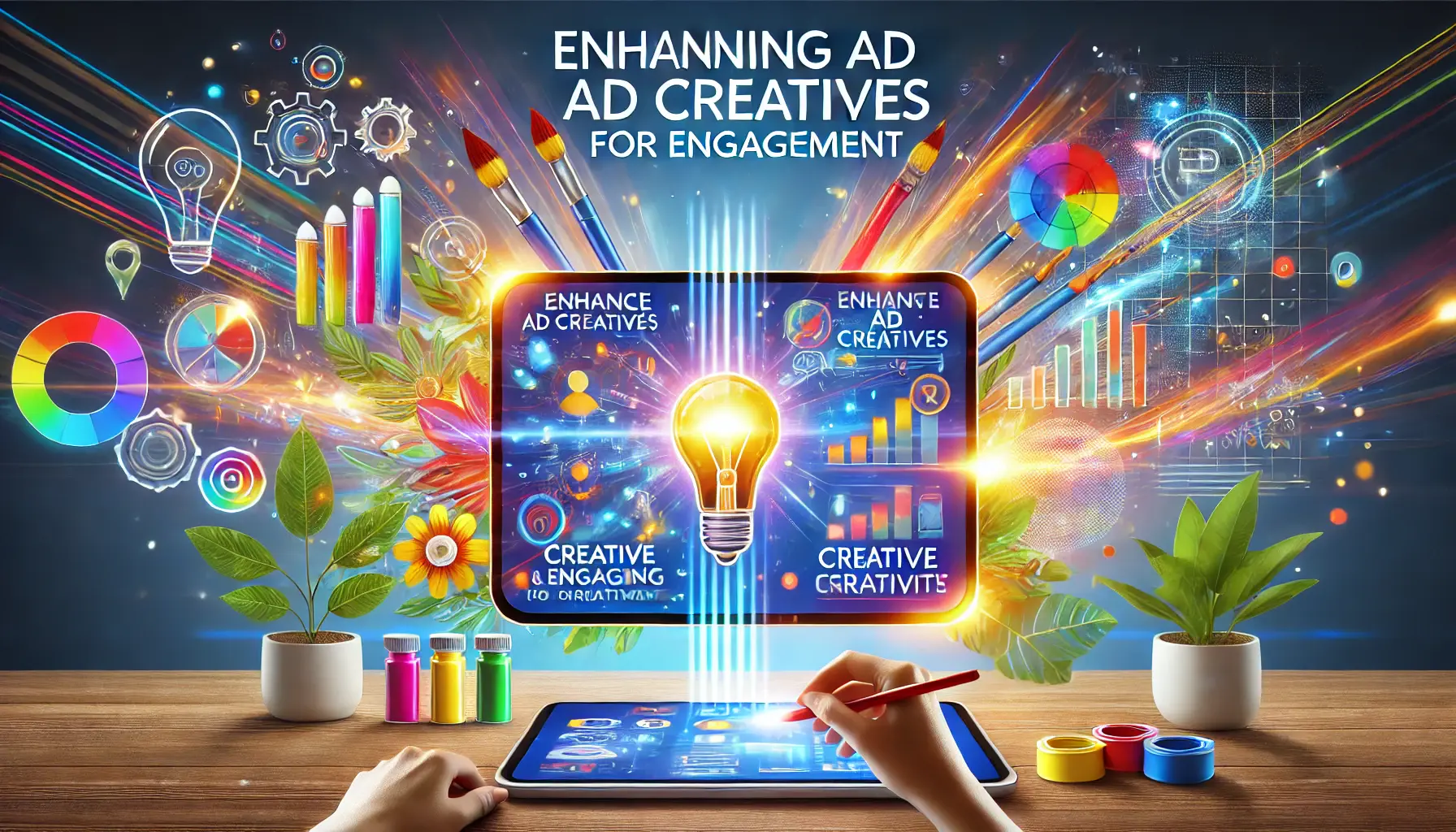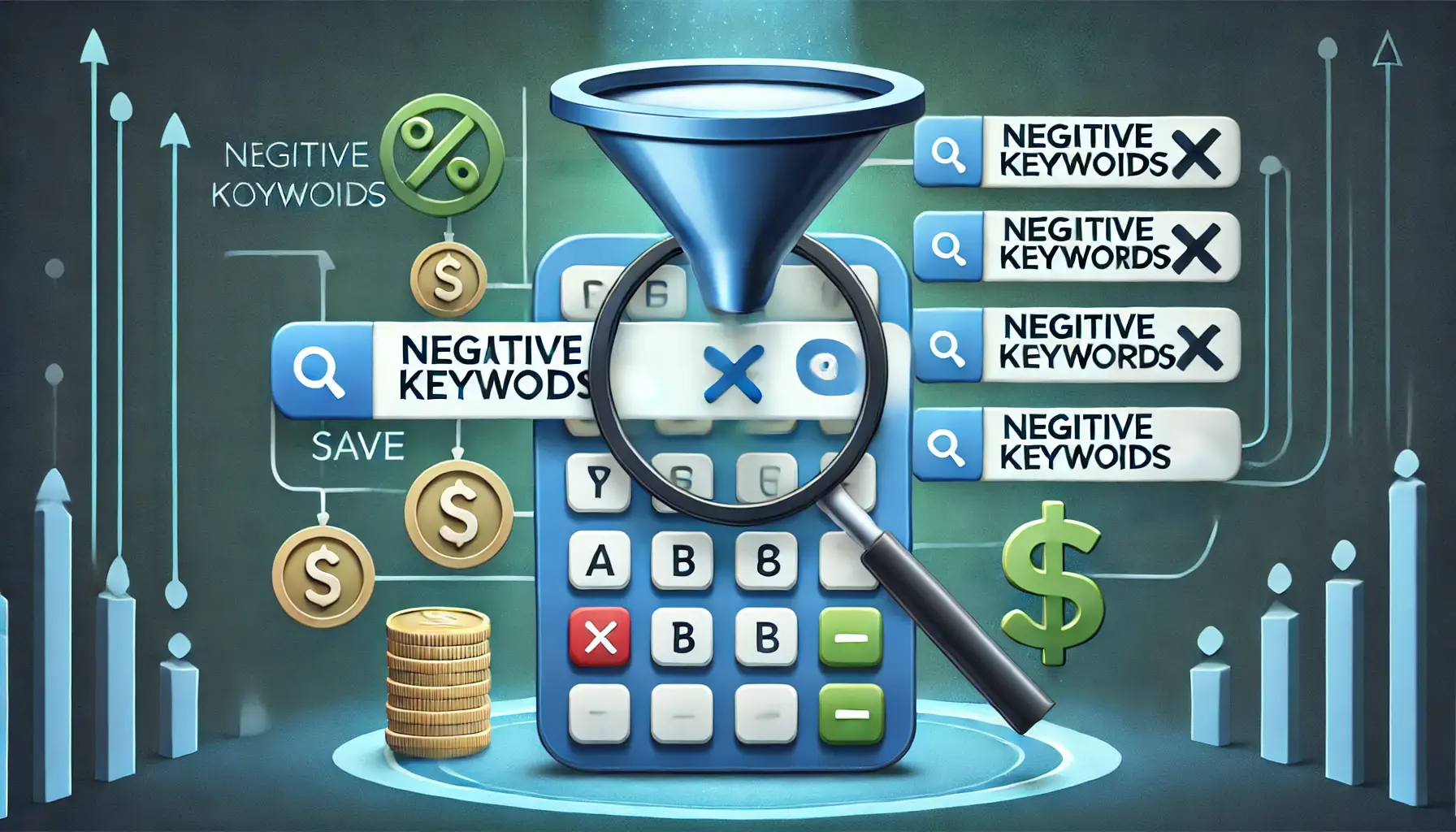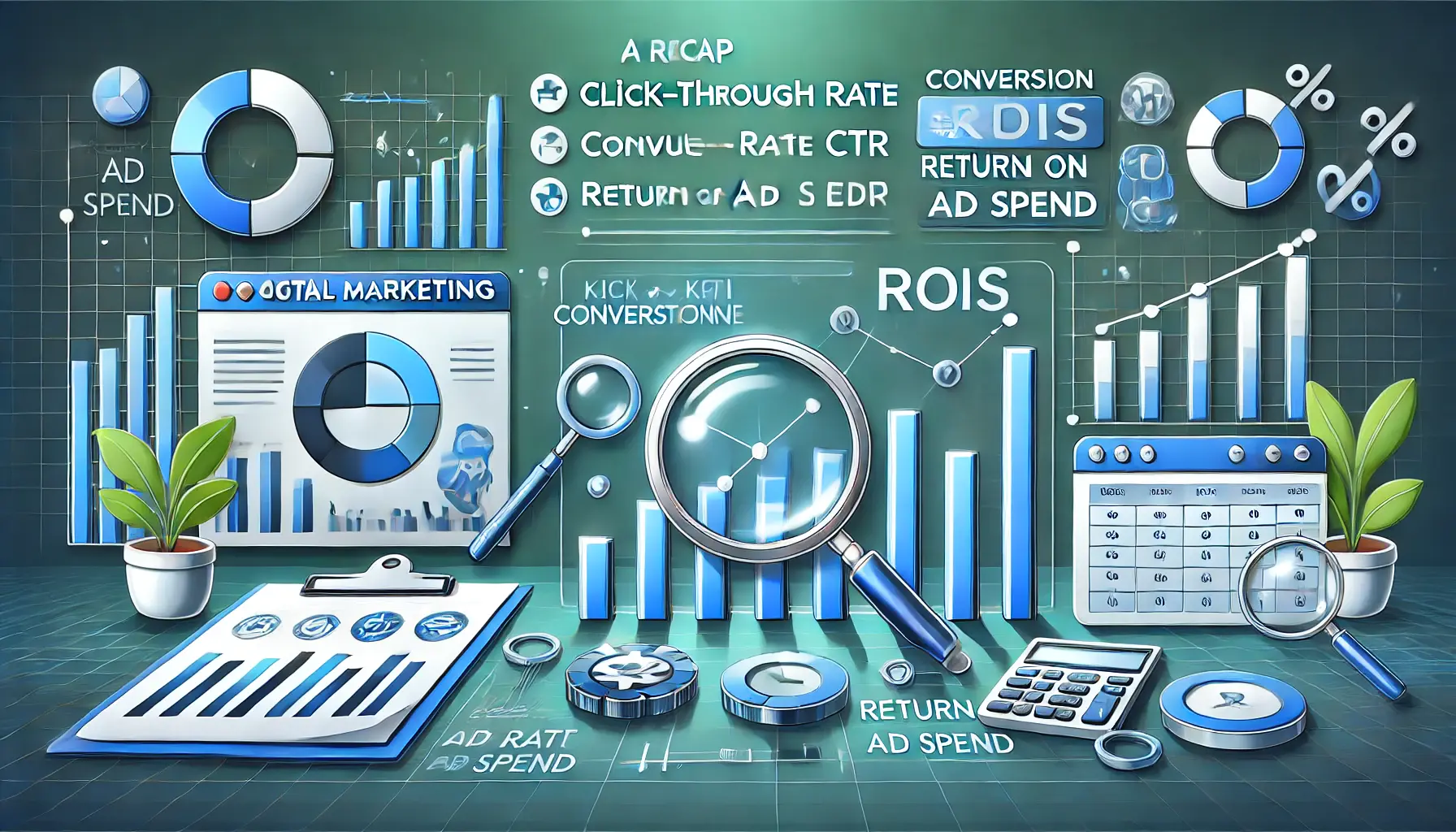In the fast-moving world of digital marketing, it is important to understand how well your ads are working.
When you invest time and resources into app ads, knowing their ad effectiveness can make or break your campaigns.
Measuring ad effectiveness isn’t just about counting clicks or views; rather, it is about deeper insights from your ads, showing their effect on the target audience and overall business objectives.
This article will explore the metrics you need to focus on to gauge the success of your app ads, starting with the basics of ad effectiveness in Google Ads.
- Understanding Ad Effectiveness in Google Ads
- Essential Metrics to Measure Ad Effectiveness
- How to Optimize Google Ads for Better Results
- Tools and Techniques for Tracking Ad Effectiveness
- Best Practices in Keeping Ad Campaigns Successful
- Mastering Ad Effectiveness for Long-Term Success
- Ad Effectiveness: Frequently Asked Questions
Understanding Ad Effectiveness in Google Ads
When we talk about ad effectiveness, we’re referring to how well your advertisements achieve their intended goals.
For app ads, this could mean downloads, in-app purchases, or even user engagement.
Google Ads provides an excellent platform to reach millions of users, but with so much competition, it’s important to know whether your campaigns are truly delivering results.

A visual representation of the importance of ad effectiveness in achieving marketing goals.
What is Ad Effectiveness and Why Does it Matter?
Ad effectiveness measures how well your ad resonates with your target audience and whether it fulfills its intended objectives.
It’s a direct reflection of your campaign’s efficiency and relevance.
Without measuring this, you risk wasting money on ads that don’t convert or meet your business goals.
- Key Insight: Effective ads drive the right users to take desired actions, such as downloading your app or making a purchase.
- Benefit: Understanding ad effectiveness helps allocate budgets wisely and maximize returns on investment.

An abstract depiction of the challenges faced in measuring the effectiveness of digital marketing ads.
Key Challenges in Measuring Ad Effectiveness
Measuring ad effectiveness isn’t always straightforward.
Here are some common challenges:
- Difficulty in attributing app downloads or purchases to specific ads.
- Over-reliance on surface metrics like impressions or clicks.
- Limited visibility into user behavior after interacting with an ad.
By addressing these challenges, you can create a clearer picture of how well your app ads are performing.

A visual representation of the importance of app ads in marketing campaigns and user engagement.
The Role of App Ads in Marketing Campaigns
App ads are an integral part of a digital marketing strategy.
They enable you to reach users on mobile devices where most app interactions happen.
By optimizing your app ads and measuring their ad effectiveness, you ensure that your marketing campaigns remain competitive and impactful.
- Fact: A significant portion of digital advertising spend globally comes through mobile ads.
- Tip: Leverage advanced targeting options available within Google Ads to zero in on the right audience.
Ad effectiveness is not just about clicks; it’s about achieving intended goals like downloads, purchases, or engagement.
- Focus on outcomes that align with business objectives.
- Optimize campaigns to reach the right users efficiently.

A visual representation of the essential metrics used to measure ad effectiveness in digital marketing.
Essential Metrics to Measure Ad Effectiveness
Measuring ad effectiveness requires focusing on specific, actionable metrics that provide insights into the performance of your campaigns.
For app ads, these metrics help evaluate whether your investment is driving the desired outcomes, such as downloads, user engagement, or purchases.
Below are four key metrics that can help you assess the success of your app ads in Google Ads.

An abstract representation of Click-Through Rate (CTR) and its role in measuring ad effectiveness.
Click-Through Rate (CTR): What It Reveals
CTR is one of the most basic yet powerful indicators of ad effectiveness.
It measures the percentage of people who clicked on your ad after seeing it, showing how engaging your ad is to your target audience.
- Formula: CTR = (Clicks / Impressions) × 100
- Why It Matters: A higher CTR indicates that your ad resonates with your audience and successfully grabs their attention.
- Optimization Tip: Use compelling ad copy, strong CTAs, and relevant keywords to boost CTR.

An illustration of the conversion rate concept, showing how clicks lead to desired actions in digital marketing.
Conversion Rate: Turning Clicks into Actions
Conversion rate tracks the percentage of users who take the desired action after clicking on your ad, such as downloading your app or making a purchase.
It directly measures the efficiency of your campaigns.
- Formula: Conversion Rate = (Conversions / Clicks) × 100
- Why It Matters: A high conversion rate indicates that your ad targets the right audience and offers compelling value.
- Optimization Tip: Optimize landing pages to align with ad messaging and improve user experience.

An illustration of Cost Per Acquisition (CPA), showing the link between cost and customer acquisition in marketing campaigns.
Cost Per Acquisition (CPA): Measuring Efficiency
CPA evaluates how much you spend to acquire a customer or achieve a specific action.
It’s a critical metric for budgeting and assessing the cost-effectiveness of your campaigns.
- Formula: CPA = Total Ad Spend / Total Conversions
- Why It Matters: Low CPA means you’re acquiring users efficiently, maximizing the return on your ad spend.
- Optimization Tip: Focus on audience segmentation and bid strategies to lower CPA.

An illustration of Return on Ad Spend (ROAS), showcasing the relationship between ad spend and profitability in marketing campaigns.
Return on Ad Spend (ROAS): Evaluating Profitability
ROAS measures the revenue generated for every dollar spent on advertising.
It’s a key metric for understanding the profitability of your campaigns.
- Formula: ROAS = Revenue / Ad Spend
- Why It Matters: High ROAS means that your campaigns are not only effective but also profitable.
- Optimization Tip: Regularly analyze and adjust underperforming ads to improve ROAS.
These metrics provide a comprehensive view of your ad campaigns’ performance.
By monitoring and optimizing these aspects, you can ensure that your app ads achieve maximum ad effectiveness and drive meaningful results.
Focus on actionable metrics like CTR, conversion rate, CPA, and ROASAn acronym for Return on Ad Spend, a metric that measures the revenue generated for every dollar spent on advertising..
- These metrics provide clarity on campaign performance.
- Track these KPIs regularly to optimize ad effectiveness.

An illustration of optimizing Google Ads, focusing on enhancing performance through tools and data analysis.
How to Optimize Google Ads for Better Results
Optimizing Google Ads is an ongoing process of making strategic adjustments toward achieving the most ad effectiveness from your campaigns.
With the right techniques, you can enhance visibility, increase conversions, and reduce unnecessary spending.
Here are some surefire tips to ensure that your Google Ads are performing at their very best for you.

An illustration of A/B testing in digital marketing, highlighting the process of testing variations to optimize performance.
Using A/B Testing to Improve Performance
The most effective approach toward the refinement of an ad campaign is A/B testingA method of comparing two versions of an advertisement to determine which performs better..
It involves comparing two variations of an ad to determine which performs better.
- How to Conduct A/B Testing: Test different headlines, ad copy, visuals, or CTAs to see what resonates most with your audience.
- Why It Matters: Regular testing ensures your ads evolve based on real audience preferences, improving ad effectiveness over time.
- Tip: Make incremental changes to isolate which factors drive better results.

An illustration of audience targeting, showing the refinement and focus of marketing strategies through segmentation.
Leveraging Audience Targeting for Precision
Reaching the right audience is key to ensuring your ads are effective.
Google Ads offers robust audience targeting options to refine your reach.
- Strategies: Use demographics, interests, and behavior-based targeting to identify and engage your ideal audience.
- Why It Matters: Precise targeting reduces wasted impressions and ensures your budget is spent on high-potential users.
- Tip: Experiment with custom intent and affinity audiences to find what works best for your app.

An illustration of enhancing ad creatives to boost user engagement in digital marketing.
Enhancing Ad Creatives for Engagement
Creative elements play a critical role in grabbing user attention and encouraging them to act.
Optimizing your ad creatives can significantly boost engagement.
- Best Practices: Use high-quality visuals, concise yet impactful text, and a compelling call-to-action (CTA).
- Why It Matters: Engaging creatives increase click-through rates (CTR) and drive better campaign results.
- Tip: Align ad visuals and messaging with the landing page for a seamless user experience.

An illustration of using negative keywords to filter out irrelevant results and save advertising budget.
Utilizing Negative Keywords to Save Budget
Negative keywords help ensure your ads don’t appear for irrelevant searches, saving your budget for the right audience.
- How to Use: Identify irrelevant or low-performing search terms and add them as negative keywords in your campaigns.
- Why It Matters: It reduces wasted ad spend and improves the overall efficiency of your campaigns.
- Tip: Regularly review the Search Terms report to update your negative keyword list.
By implementing these strategies, you can ensure your Google Ads campaigns achieve their full potential.
It is important to remember that optimization for ad effectiveness improves results and maximizes your return on investment.
Continuous optimization is key to better ad performance.
- Use A/B testing to refine campaigns.
- Enhance audience targeting and ad creatives for better engagement.
An illustration of tools and techniques for tracking ad effectiveness using analytics platforms and tracking icons.
Tools and Techniques for Tracking Ad Effectiveness
Tracking ad effectiveness is critical to ensure that your campaigns deliver the desired results.
By using the right tools and techniques, you can gather actionable insights, measure success, and refine your strategies for better outcomes.
Here are some effective tools and techniques to help you monitor and improve your ad campaigns.
An illustration of using Google Analytics to track and analyze ad performance through detailed charts and data points.
Google Analytics: Insights for Performance Tracking
Google Analytics is a powerful tool that provides comprehensive data on how users interact with your ads and website.
- Features: Track website traffic, user behavior, and conversion rates.
- Why It Matters: It helps identify which campaigns drive the most engagement and conversions.
- Tip: Set up custom goals to track specific actions, such as app downloads or in-app purchases.

undefined
Attribution Models: Understanding Customer Journeys
Attribution models help you understand how different touchpoints contribute to conversions.
This insight is essential for allocating budgets effectively.
- Types: First-click, last-click, linear, and data-driven attribution models.
- Why It Matters: Attribution models reveal which channels are most effective in driving conversions.
- Tip: Use Google Ads’ data-driven attribution to make informed decisions.
An illustration of app tracking tools for measuring user behavior through data analytics and mobile tracking icons.
App Tracking Tools: Measuring User Behavior
App tracking tools are crucial for understanding how users interact with your app after they engage with your ads.
- Examples: Firebase, Adjust, and Appsflyer.
- Why It Matters: These tools provide insights into app installs, user retention, and in-app behavior.
- Tip: Integrate tracking tools with Google Ads for seamless data analysis.

An illustration of integrating third-party platforms for gaining deeper insights through data analysis and interconnected tools.
Integrating Third-Party Platforms for Deeper Insights
Third-party platforms can complement Google Ads’ capabilities by offering advanced analytics and reporting features.
- Popular Options: HubSpot, SEMrush, and Tableau.
- Why It Matters: They provide a broader perspective on campaign performance and competitor analysis.
- Tip: Use these platforms to create detailed reports and identify new opportunities for optimization.
By leveraging these tools and techniques, you can effectively track and analyze the performance of your ad campaigns.
This ensures maximum ad effectiveness, providing you with the ability to make data-driven decisions in improving your marketing strategies.
Leverage tools like Google Analytics, FirebaseA platform developed by Google for creating mobile and web applications., and SEMrush for insights.
- Use attribution models to understand the customer journey.
- Integrate third-party platforms for enhanced reporting.

An illustration of the best practices for maintaining successful ad campaigns, focusing on planning, optimization, and performance tracking.
Best Practices in Keeping Ad Campaigns Successful
Maintaining the success of your ad campaign requires regular effort and is supported by a strategic action plan.
You will realize long-term ad effectiveness, keeping your campaigns competitive within the rapidly changing digital landscape by following proven best practices.
Here are the key strategies to sustain success in your ad campaigns.

An illustration of setting realistic campaign goals, symbolized by a target with arrows hitting the bullseye and progress toward success.
Setting Realistic Campaign Goals
Clear and realistic goals are the foundation of any successful ad campaign.
These goals help guide your strategy and measure progress effectively.
- How to Set Goals: Use the SMART framework—Specific, Measurable, Achievable, Relevant, and Time-bound.
- Why It Matters: Realistic goals align your campaign with business objectives and prevent wasted resources.
- Tip: Regularly review and adjust goals to reflect market trends and performance data.

An illustration of regularly monitoring campaign performance through analytics tools and data tracking.
Regularly Monitoring Campaign Performance
Continuous monitoring ensures that your campaigns stay on track and perform optimally.
- Key Actions: Track metrics such as CTR, CPA, ROAS, and conversion rates.
- Why It Matters: Monitoring provides insights into what’s working and what needs improvement.
- Tip: Use automated rules in Google Ads to manage bids and budgets more efficiently.

An illustration of adapting digital marketing strategies based on data insights and analysis.
Adapting Strategies Based on Data Insights
Ad campaigns require flexibility to adapt to changing audience preferences and market conditions.
Data-driven decisions ensure your strategies remain effective.
- How to Adapt: Analyze performance data regularly and identify patterns or trends.
- Why It Matters: Quick adaptations help maintain campaign relevance and effectiveness.
- Tip: Leverage Google Ads’ reporting tools to uncover actionable insights.

An illustration of balancing budget allocation across multiple marketing channels to optimize resources.
Balancing Budget Allocation Across Channels
Distributing your budget wisely across different channels helps maximize overall campaign performance.
- Best Practices: Allocate budgets based on channel performance and audience behavior.
- Why It Matters: Balanced allocation ensures no single channel drains your resources unnecessarily.
- Tip: Use channel-specific ROAS data to refine your budget distribution strategy.
By implementing these best practices, you can sustain the success of your ad campaigns while maximizing ad effectiveness.
Remember, continuous optimization and strategic planning are how one stays ahead in today’s competitive digital marketing landscape.
Ad campaign success requires realistic goals, consistent monitoring, and data-driven strategies.
- Adapt campaigns based on market trends and audience behavior.
- Allocate budgets efficiently across channels.

undefined
Mastering Ad Effectiveness for Long-Term Success
Ad effectiveness is the cornerstone of a successful digital marketing strategy.
Whether you’re running app ads to drive downloads, increase engagement, or boost revenue, understanding and optimizing their performance is essential to achieve your goals.
This article has provided a comprehensive guide to help you measure, analyze, and sustain the effectiveness of your campaigns.

An illustration of reviewing and analyzing key metrics like CTR, conversion rate, and ROAS to measure ad effectiveness.
Recap of Key Metrics to Measure Ad Effectiveness
The success of your app ads depends on tracking the right metrics.
Metrics like Click-Through Rate (CTR), Conversion Rate, Cost Per Acquisition (CPA), and Return on Ad Spend (ROAS) are vital for understanding how well your campaigns resonate with your audience.
By focusing on these indicators, you can gain actionable insights into your ad performance and refine your strategies accordingly.

An illustration of using tools and techniques to optimize and enhance performance in digital marketing.
Tools and Techniques to Enhance Performance
Leveraging the right tools is crucial for tracking and improving ad effectiveness.
Google Analytics offers a wealth of data to understand user behavior, while attribution modelsFrameworks used to determine how credit for conversions is assigned to different touchpoints in the customer journey. shed light on the customer journey.
App tracking tools like Firebase and third-party platforms such as SEMrush provide advanced analytics to help you make informed decisions.
Combining these tools ensures that your campaigns remain competitive and impactful.

An illustration of best practices for sustained success in digital marketing, focusing on growth and optimization.
Best Practices for Sustained Success
Sustaining ad campaign success requires a strategic approach.
Setting realistic goals, continuously monitoring performance, adapting based on data insights, and balancing budgets across channels are proven strategies to ensure long-term effectiveness.
These practices not only heighten the efficiency of your campaigns but also ensure further value from every dollar spent on advertising.
As the digital landscape continuously changes, your ability to stay nimble and informed by data points will be your biggest advantage.
With these metrics, tools, and best practices informing your strategy, you can master ad effectiveness and deliver real value for your business.
Long-term ad effectiveness relies on mastering key metrics, leveraging the right tools, and following best practices.
- Track metrics like CTR, CPA, and ROAS.
- Continuously refine campaigns to stay competitive.

An illustration of frequently asked questions about ad effectiveness, featuring question icons and data analysis symbols.
Your campaigns can be managed by an agency specialized in Google Ads, check out our service page.
Ad Effectiveness: Frequently Asked Questions
Understanding ad effectiveness is crucial to optimize your campaigns.
Below are answers to some of the most common questions related to this topic, helping you maximize the impact of your advertising efforts.
Ad effectiveness refers to the degree at which an advertisement is able to achieve its intended goals, such as driving engagement, conversions, or revenue.
It is measured using specific metrics like CTR, CPA, and ROAS.
Ad effectiveness helps determine the success of your campaigns.
It ensures your budget is spent wisely, identifies areas for improvement, and provides insights into what resonates with your target audience.
Measure ad effectiveness using metrics like CTR, Conversion Rate, CPA, and ROAS.
Utilize tools such as Google Analytics and app tracking platforms to gain deeper insights into performance.
Tools like Google Analytics, Firebase, and SEMrush help track performance and refine strategies.
Attribution models and reporting tools provide additional insights into customer behavior and campaign impact.
Review your campaign performance weekly to ensure it stays on track.
Regular analysis allows you to make necessary adjustments and optimize for better results over time.
Set realistic goals, monitor performance regularly, adapt based on insights, and balance budgets across channels.
Continuously refining these aspects ensures long-term ad effectiveness and success.
Yes, combining tools like Google Analytics with third-party platforms enhances tracking capabilities.
This integration provides a comprehensive view of campaign performance and helps uncover actionable insights.
Data-driven decisions ensure your strategies align with real performance insights.
They help identify trends, optimize campaigns, and allocate budgets effectively, leading to improved ad effectiveness.
Identify the cause of underperformance through metrics and testing.
Adjust targeting, creatives, or bidding strategies to improve results.
A/B testing can be particularly useful in refining ad elements.










